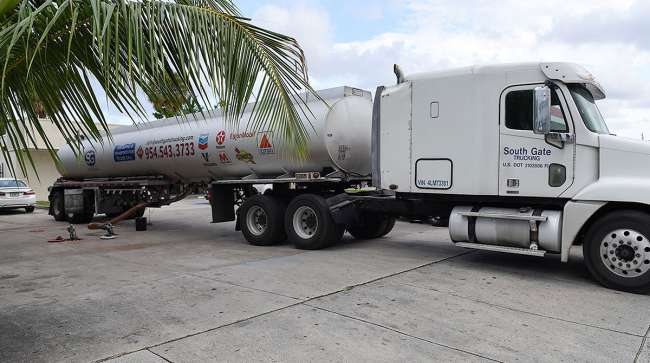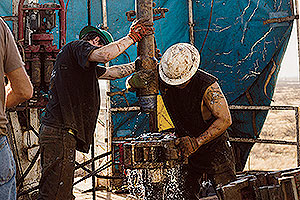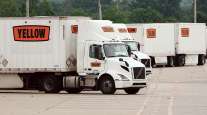Contributing Writer
Falling Oil Prices May Stem Demand for Trucks, Experts Warn

[Stay on top of transportation news: Get TTNews in your inbox.]
The rapid plunge in oil prices could cut into sales of both tractors and liquid tank trailers as well as the trucks that haul fossil fuel extraction equipment, experts said.
S&P Global Ratings slashed its 2020 estimates for West Texas Intermediate and Brent crude oil prices by $10 a barrel to $25 and $30 on March 19. But with West Texas crude already trading around $20, some analysts say a slump to $10 a barrel is possible.
The oil price crash is a result of rapidly declining demand as parts of the U.S. and other industrial nations employ lockdowns to control the coronavirus pandemic. A bitter price war between oil producers Saudi Arabia and Russia compounds the problem.
“This $20-a-barrel area could hold assuming that the market gets optimistic that there is an end game to the crisis, if the financial package that the government is pushing through kicks in and there is a truce to the Russia-Saudi price war,” said Phil Flynn, an analyst with The Price Futures Group in Chicago. “But if the virus keeps the economy shut down for long, it could easily go to $10.”
There could be no place to put the oil that producers are pumping now, S&P said.
“Oil markets are heading into a period of a severe supply-demand imbalance in second-quarter 2020. The acute oversupply threatens to test the limits of crude and product storage as soon as May,” the corporate credit rating service said in a report March 19.
Big producers such as Chevron and ExxonMobil and smaller companies, including Centennial Resource Development Inc. and Pioneer Natural Resources Co., are reducing their capital expenditures by billions of dollars.
That will slash demand for new oil field trucks and if companies fail, exacerbate an already weak market for used equipment.
“From an economics perspective, if we see less investment in energy-related business we are not going need a lot of trucks to move equipment around,” said Beth Ann Bovino, U.S. chief economist at S&P Global.
The pain will be felt most by truck dealers regionally, including Texas, New Mexico, the Gulf States and North Dakota, analysts said.

Workers connect drill bits and collars used to extract petroleum on a drilling rig in the Permian Basin outside of Midland, Texas. (Brittany Sowacke/Bloomberg News)
About 3% of the U.S. truck fleet is used for fossil fuel extraction and production, said Steve Tam, vice president of ACT Research. That does not include the tankers that deliver fuel to gas stations and distribution centers, he said.
There’s really no place for much of the equipment to go because if the energy producers don’t need the vehicles there won’t be ready buyers, Tam said.
ACT is already forecasting a 50% reduction in the new tank trailer market this year. About 60% of new tank trailer sales are for the oil and refined product market.
For now, business in the Texas oil fields is continuing at a slower pace than previous years but has not taken a pandemic-related plunge, according to some workers.
Elizabeth Sweet hauls sand used for fracking in the Odessa and Midland area with an International MV. The trucker takes sand from a railhead to drilling sites where workers mix it with water and chemicals and inject it at high pressure into the wells. The mixture opens up cracks in the earth and releases oil and natural gas.
“Things had already started to slow down before the coronavirus. Part of it is election year uncertainty. Since the coronavirus hit, I have not seen any more slowdown. We will always need gas and oil,” Sweet said.
The Trump administration’s plan to top off the strategic petroleum reserve will help support production, she said.
Sweet hopes production continues at current levels because working in the oil patch is among the most lucrative trucking jobs.
“It is good work,” Sweet said.
Want more news? Listen to today's daily briefing:




